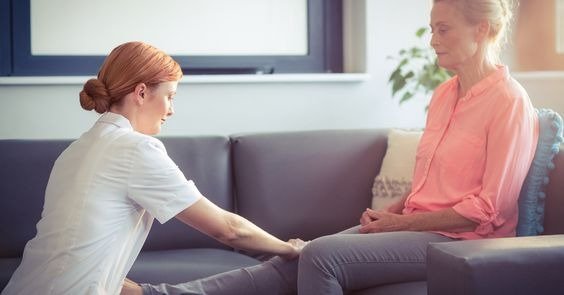
Exercise after joint replacement
Rehab is crucial to effectively returning to a healthy, active lifestyle following joint replacement surgery, so if you’re considering one of these treatments, keep that in mind. In order to gradually enhance balance, flexibility, muscular strength, and joint function, exercise is the main component of that therapy. You will be instructed to do a variety of exercises every day, especially in the early stages of rehabilitation following a hip or knee replacement. The following six workouts for post-joint replacement surgery are some of the most regularly recommended.
Learn to Control Common Age-Related Threats to Bone Health to Maintain Bone Health
1.Ankle boots
- After joint replacement surgery, ankle pumps are advised to help reduce swelling and lower the chance of forming blood clots, one of the most frequent surgical consequences. It will be necessary for you to lay flat on your back while flexing both ankles, first upward to point your toes toward your body and then downward to point them away from it. Additionally, you will be required to rotate your feet both clockwise and counter clockwise while maintaining a ceiling-facing toe position.
2. The heel slide
- Heel slides help to increase hamstring muscle strength and the flexibility and performance of the hip and knee joints. You will be instructed to lay flat on your back and slip your foot and heel toward your buttocks before returning to the starting position. You must perform these movements with your kneecap pointing upwards at all times.
3. Thigh compressions
- Thigh squeezes develop the quadriceps, which are essential for supporting the hip and knee joints and ensuring their effective operation. You will be instructed to tense your thigh muscles by bringing the back of your leg down while resting flat on your back. After holding that position for 5 seconds, you must again relax your muscles.
4. Leg sloshing
- Leg slides are crucial for regaining excellent balance and a proper gait because they build the muscles that support the pelvis while you walk. To perform this exercise, lie on your back with your knees directed toward the ceiling. Then, one at a time, slide your legs out to the side and back.
5. Lifts with straight legs
- Straight leg lifts strengthen the quadriceps and assist the hip and knee joints become more stable. To perform them, lie on your back with your legs fully extended. Tighten the muscles in your thighs, then lift each leg one at a time about 6 inches, holding the position for 10 seconds.
6. Knee lifts while standing
- Standing knee raises help to strengthen and flex the knee and hip joints while also enhancing balance. You will lift your knee toward your chest while supporting it by holding onto a rail, a walker, or the back of a chair. You will be required to maintain that posture for two to three seconds before lowering your leg once more.
- In order to learn how to exercise properly, you must work closely with rehabilitative specialists. While these activities and others will help you heal more quickly, lessen daily pain, and help ensure a positive outcome after joint replacement surgery. Your artificial joint will be different from what your natural joint was, and you’ll have to abide by some limits.




